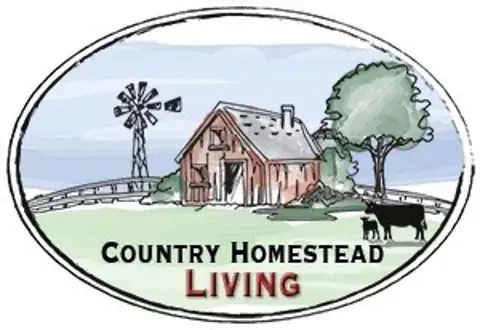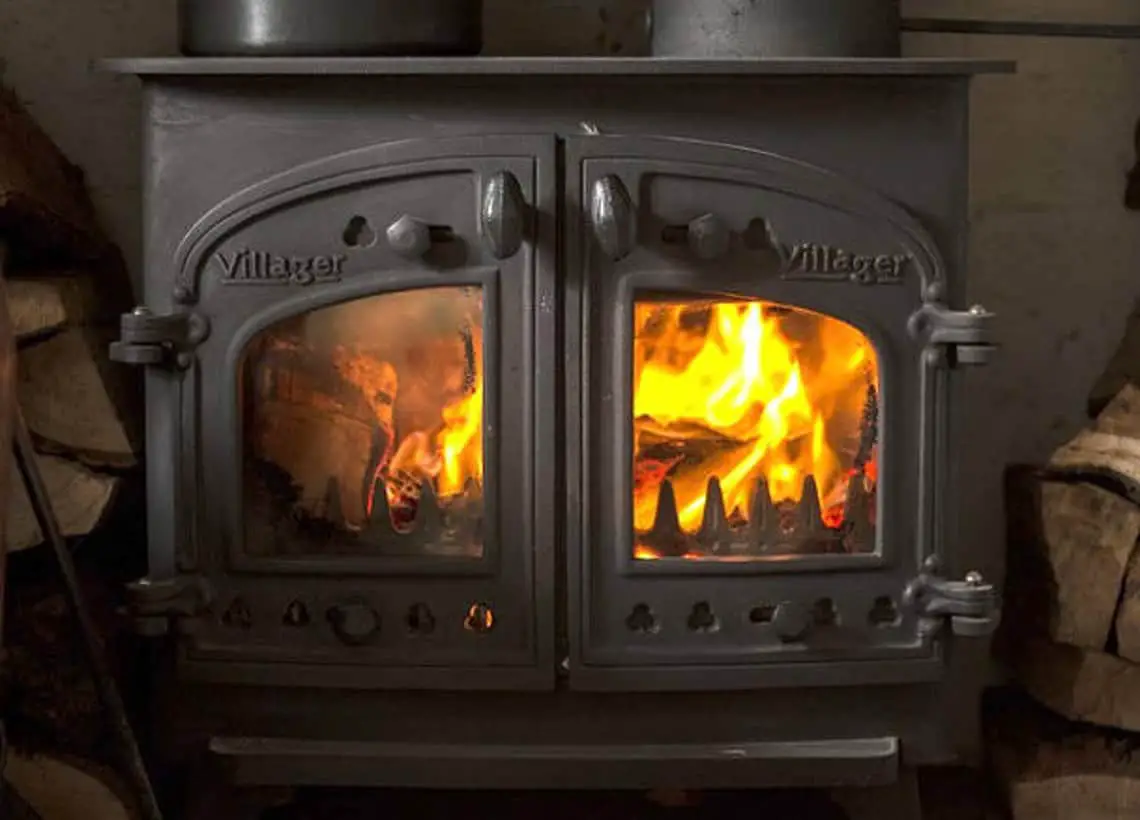For nearly 20 years I have lived in homes that had wood stoves for heat or supplemental heat.
In some of the homes the stoves heated just fine. In other homes there were rooms the heat did not reach.
In one case the wood stove would not hold a fire all night long.
There are several factors that explain why a wood stove may not sufficiently heat a home.
These factors include:
- How wood stove square feet ratings are determined
- Where the wood stove is placed in the home
- The floor plan of the home
- The insulation of the home
- Other factors such as ceiling height, window type and fire box size
Understanding these factors will give you a better chance of being happy with heating with a wood stove.
How Wood Stove Square Feet Ratings Are Determined
How large a house a wood stove will heat is determined based on what wood stove manufacturers call an ideal or standard house.
This standard house is properly insulated for the part of the country it is located in.
No ceiling is over 8 feet high.
The wood stove is placed dead center of the house.
All windows are at least double pane windows.
The floor plan of the house is an open floor plan with wide hallways and no sharp corners that the heat has to flow around.
Unless the wood stove has a blower to help circulate the heat it puts out, the heat radiates out from the wood stove by convection.
So how large a house any wood stove will heat depends upon how many of those ideal or standard house conditions are present in your home.
Wood Stove Placement In A Home
A wood stove placed in the center of the house has a better chance of heating the house evenly than a wood stove placed to one side of the house.
The size of house a wood stove is rated to heat, usually expressed in square feet, is determined with the wood stove placed dead center of the house.
If you have a 2000 square foot home and you purchase a wood stove rated to heat a 2000 square foot home, the wood stove will not heat the entire house unless it is placed in the center of the house.
If it is not placed in the center of the house, the end of the house closest to the wood stove will be warm and the other end of the house will be cold.
The Floor Plan Of The House
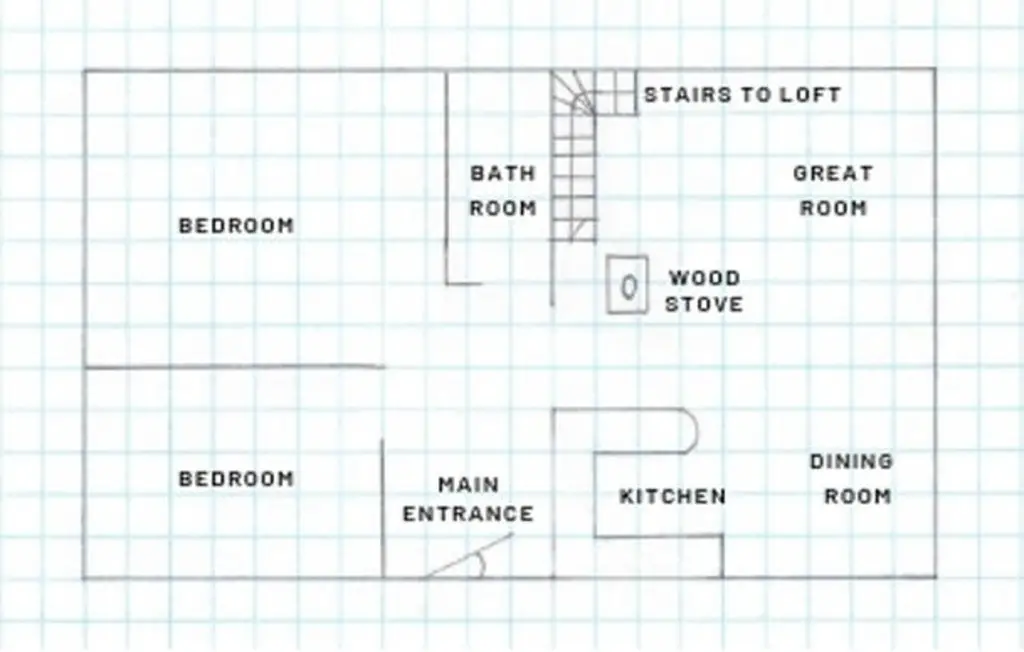
For convection heat from a wood stove to get to all parts of the house, there needs to be an open floor plan.
An open floor plan means there are wide hallways and as few corners as possible that the heat has to go through to reach all parts of the house.
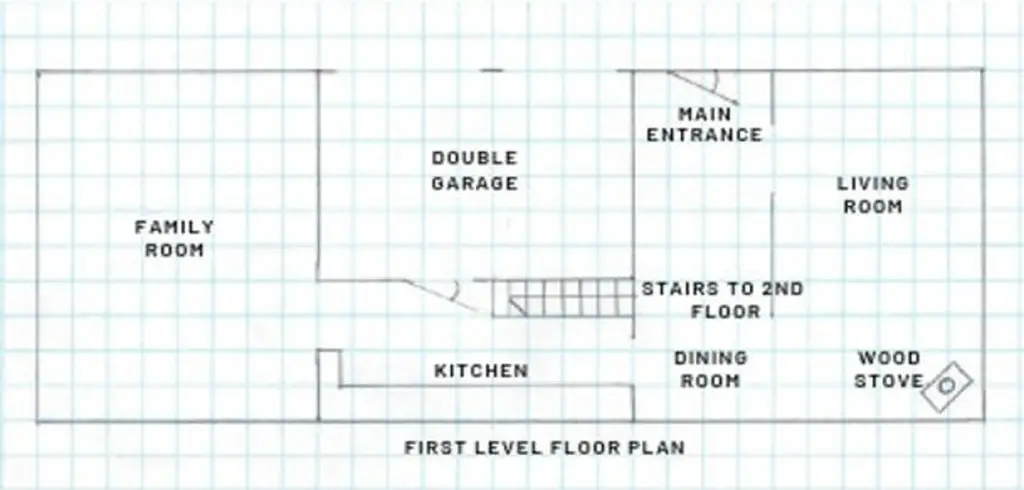
A floor plan with narrow halls and a lot of corners the heat would have to go around will have cold areas in the winter.
If the house is two story, the placement of the steps going upstairs and how wide they are will determine if the heat can easily flow upstairs.
Wide stairs coupled with an open area at the top of the steps where each room’s door opens off of is preferable to narrow stairs and a long upstairs hallway.
The Home’s Insulation
A home’s insulation is an area that is sometimes overlooked.
If a home is not insulated adequately for the part of the country it is located in, a wood stove will not heat that home satisfactorily.
Adequate insulation means in the ceiling, walls and floor if the house has a crawl space.
Less than adequate insulation, especially in the ceiling, will adversely affect the wood stove’s ability to heat a home.
Since heat rises, more heat is lost from inadequate insulation in the ceiling than from any other part of the house.
Inadequate insulation in the walls and under the floor if the house has a crawl space will affect the wood stove’s ability to adequately heat a house.
After heat loss through the ceiling, the next most common place for heat to be lost is through the walls and then through the floor.
Other Factors Affecting A Wood Stove’s Ability To Heat A House
There are other factors related to house design that can adversely affect a wood stove’s ability to adequately heat a house.
We will look at several of them.
Ceiling Height
Since heat rises, the height of the ceiling can affect the wood stove’s ability to heat a house.
An 8 foot ceiling is the standard height in America.
If the ceiling is 10 feet high there is an extra 2 feet of height times the square footage of the house that needs to be heated.
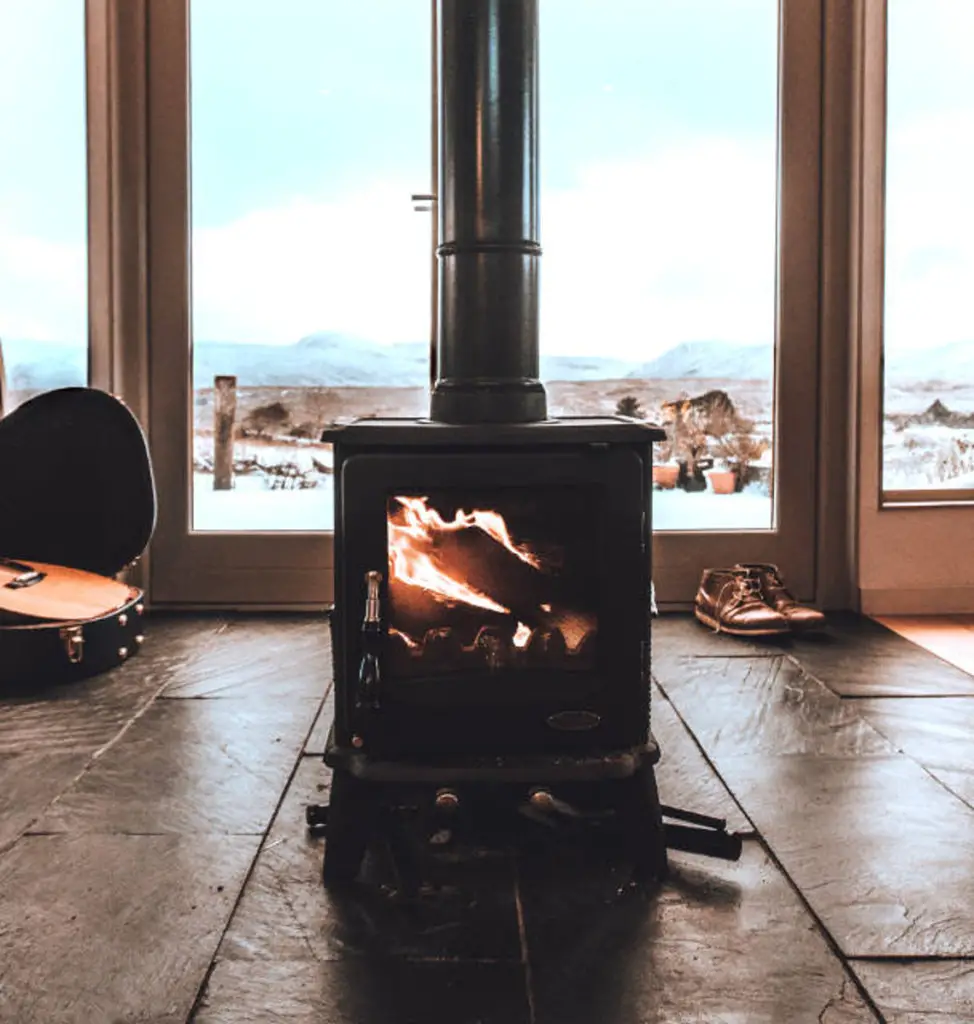
As an example; if the house is 2000 square feet in floor space but the ceiling height is 10 feet instead of 8 feet high, the house has 4,000 square feet more space the wood stove needs to heat.
Since heat rises that means a lot of heat will be in the 8 foot to 10 foot area of the ceiling instead of closer to the living area of the house.
The living area is the area from the floor up to the 6 foot level.
Another example is cathedral ceilings.
We lived in a house that had cathedral ceilings in two rooms.
In one room the ceiling height was 8 feet at the front wall and 11 1/2 feet at the rear wall.
The other room was 6 feet at the rear wall and 9 1/2 feet at the front wall.
Those ceilings needed ceiling fans to push the heat back down to the living level for the rooms to feel warm.
Any combination of ceilings over 8 feet high will adversely affect a wood stove’s ability to adequately heat a house the size the wood stove is advertised to heat.
Window Type
All the windows should be double pane windows, sometimes referred to as double glazed windows.
If the windows are single pane the wood stove will not be able to adequately heat a house the size it is advertised to heat.
If the windows are metal framed, be sure there is a thermal break inserted between the outer metal frame and the inner metal frame.
This is usually a plastic thermal brake to stop the metal frame on the outside from conducting the cold to the metal frame on the inside.
The old fashioned storm windows or the plastic window covers that are sold at building supply houses help prevent heat loss from inside to the outside.
However, they are not as efficient as true double pane windows.
If you have the old fashioned storm windows or the plastic window covers, the wood stove will probably not heat as well as you hoped it would.
Fire Box Size
The fire box size is related to the overall size of the wood stove.
The larger the wood stove, the more surface area there is for heat to radiate from.
The more surface area the wood stove has, usually the larger the fire box size, but not always.
Some wood stove manufacturers focus on efficiency to the point that in designing a wood stove that is more efficient the fire box size is reduced.
One method for making a wood stove more efficient is to put a series of baffles or a catalytic converter in the top of the stove inside.
This reduces the size of the fire box.
A more efficient wood stove burns wood and gases coming from the burning wood more completely.
This reduces pollutants released by burning wood.
But if the baffles or catalytic converter reduces the size of the fire box the stove has to have wood put in it more often.
When the fire box size is reduced, the wood stove does not hold as much fire wood.
When a wood stove does not hold as much fire wood, the fire does not last as long.
When the fire does not last as long, the stove gets cold – quits putting out heat – sooner than it would with a larger fire box.
So there is sort of a balancing act between fire box size and wood stove efficiency.
Both of these factors are important.
Some wood stove manufacturers do a better job of balancing these two factors than other wood stove manufacturers.

If a wood stove is your main source of heat during the winter you will want a wood stove that holds a fire for at least 8 hours.
Not all wood stoves will hold a fire for at least 8 hours.
To reliably hold a fire for at least 8 hours the fire box size needs to be at least 2 cubic feet or larger in size.
If a wood stove does not hold a fire for at least 8 hours, you will wake up each morning to a cold house.
Or you will set the alarm clock for about 3 a.m. and get up and stoke the fire, each night, so you can wake up to a warm house.
Let me explain it this way.
The first of 2 houses we rented when we moved to North Idaho had a Quadra-Fire wood burning stove as the main source of heat.
That house was about 2500 square feet, very adequately insulated, ceilings 8 feet high, very open floor plan with no sharp corners for the heat to have to flow around.
The Quadra-Fire wood stove was located almost dead center of the house.
With a good fire going in that wood stove the entire house was nice and warm.
However, that Quadra-Fire wood stove would not hold a fire for more than about 6 hours.
Even with a fire box full of seasoned Mountain Larch, (also known as Tamarack), the best firewood available in North Idaho.
That meant setting the alarm clock for 3 a.m. each morning, getting up and putting more wood on the fire.
If I did not do that, we would wake up to a cold house each winter morning.
We spent 2 winters in that house and each winter morning at 3 a.m. I’d get up and add wood to the fire.
When we would need to go to town in the winter time it was a 2 hour drive one way.
I’d fill the wood stove with fire wood and turn the damper down so the fire would last as long as possible.
But when we arrived back home some 8 hours later, the temperature in the house would be about 60 degrees F.
I’d start a fire and it would take about 2 hours for the house to warm up to 70 degrees F.
Quadra-Fire has wood stoves that hold a fire for at least 8 hours.
If a wood burning stove is the main source of heat for the winter and it does not hold a fire for at least 8 hours, it is not a good stove in my book.
I have since used wood stoves that cost much less than the Quadra-Fire that was in that rental house yet were about the same size wood stove.
Those other wood stoves would all hold a fire for 8 hours or longer.
They also met or exceeded the EPA allowance for pollutants from burning wood in them.
Wood Stove Installation
Wood stoves should be at least 18 inches from combustibles or the wall behind the wood stoves.
If installed near a wall, the wall should be shielded with an approved non-combustible such as stone or other approved material.
Some wood stoves, such as those approved for mobile homes are shielded so they can be placed closer to a combustible wall.
Single wall black stove pipe should be 18 inches from combustibles.
Single wall black stove pipe gives off more heat than double walled black stove pipe.
Double wall black stove pipe can be as close to combustibles as 6 inches.
Double wall black stove pipe is less likely to build up creosote inside.
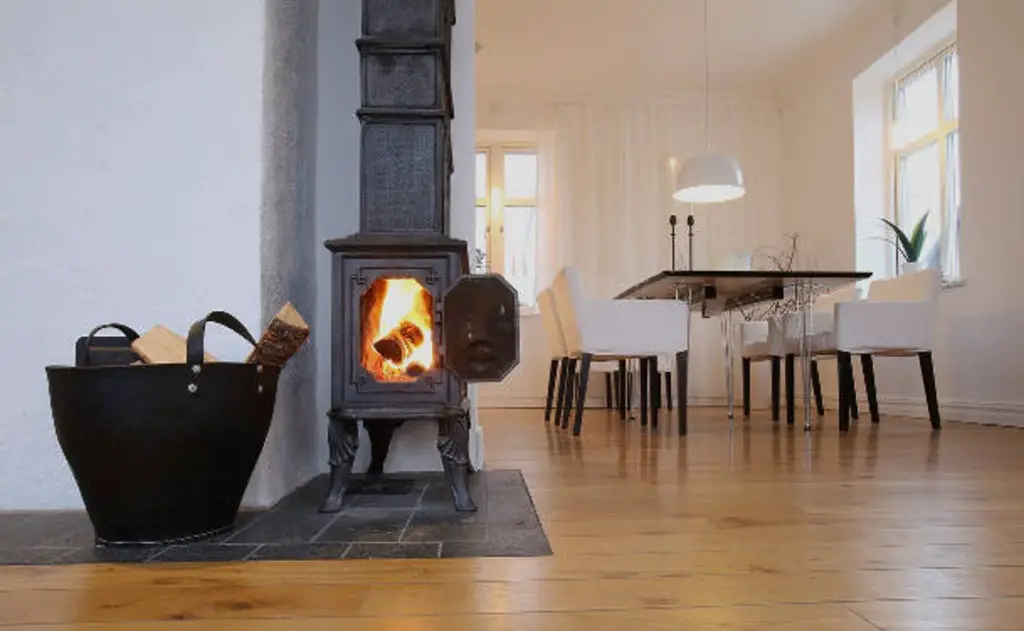
A wood stove should be installed on a non-combustible surface.
This surface should extend at least 18 inches out from the front of the wood stove.
One purpose for this surface extending out for 18 inches in front of the stove is to catch hot coals that might fall out of the stove when the door is opened.
A wood stove store will have pre-made surfaces to go under the wood stove.
The larger the wood stove is, the larger the pre-made surface for it to be placed on should be.
Wood Stove Quirks
A wood stove with a good fire going in it should not leak smoke out into the room when the door is opened.
But if the outside air is unusually cold and the fire is not going good, there can be smoke coming out into the room when the door is open.
Some wood stoves may need the door ajar and the air vent wide open when starting a new fire.
Once the wood is burning good you can close the door and adjust the air vent.
There are 2 main ways to stop a wood stove from smoking when you open the door.
- Only burn clean, dry, seasoned wood.
- When placing wood in the stove, do not stack it close to the stove’s front, near the door.
When wood is stacked near the back of the stove the smoke flows up the chimney much easier.
You can usually tell seasoned wood by the cracks that will appear on the sawn ends of the logs.
Duraflame Logs are not designed to burn in a wood stove.
However, the Duraflame Stax Crackling Firelogs (link to read reviews on Amazon) can be used in a wood stove.
Is it possible to burn Charcoal Briquettes in a wood stove?
Charcoal burns hotter than wood but not as hot as coal.
Multi-fuel stoves can burn both coal and wood.
Since charcoal does not burn as hot as coal, you can burn it in a wood stove.
Some things should never be burned in a wood stove.
They include; wet or unseasoned fire wood, Christmas trees, painted or pressure treated lumber, paper that is colored or has colored print, plywood, particle board or chip board, fire accelerants or fire starters, plastics and dryer lint.
When wood burns it actually vaporizes.
The wood can contain wood alcohol or water vapor.
If there is enough wood alcohol or water the heat turns it to steam and the wood will pop or crackle when burned.
If a wood stove burns too hot, how do you cool it down?
Close the air intake!
This will cool down the fire and make the wood last longer.
This is related to overfiring a wood stove or burning a bigger and hotter fire than is needed.
This weakens the metal and damages the stove to where it may no longer be air tight. Overfiring uses more wood than you need to be using.
The recommended temperature of the outside of the wood stove – the metal surface that radiates heat to the house – is between 110 and 250 degrees F.
A hotter stove uses wood faster.
Once you become familiar with your wood stove you will learn the ideal temperature that heats your home efficiently.
Then you will get the most out of each piece of fire wood you burn.
Sometimes a wood stove will back-draft.
Normally a wood stove with a hot fire creates an updraft that takes smoke and gases up and out the chimney.
Smoke rises because it is hotter than air.
Back-drafting can mean the fire has not yet gotten hot enough to updraft.
Another reason for back-drafting could be a creosote obstructed stove pipe or chimney cap.
I’ve written a whole article on stove pipes and chimneys that is well worth reading titled, “Wood Burning Stove Chimneys, An Informative Buyer’s Guide.”

Wood stoves burn differently than fireplaces.
Many fireplaces are open fronted.
A wood stove burns better with the door closed.
A wood stove can actually put out 60% more heat with the door closed than if the door is left open!
The glass in wood stove doors is a ceramic glass that can withstand very high heat without breaking.
This glass rarely breaks even when there is some pressure against it from logs in the wood stove.
One reason early models of Earth Stoves and other stove brands did not have glass in the doors was because the glass of that time would break under high heat.
The most common wood stoves are made out of rolled steel with welded seams or out of cast iron that is joined together at the seams and has a rope like caulk in the seams.
Both stoves will have the fire chamber lined with fire brick.
Every few years the fire brick will need replacing. This is an easy Do It Yourself Project.
When the cast iron stove needs the rope caulk replaced most stove owners will have someone from the stove store come out and disassemble the stove, replace the caulk and reassemble the stove.
A cast iron stove can radiate heat longer than a rolled steel stove radiates heat after the fire goes out.
A quality wood stove, whether cast iron or rolled steel, can last a lifetime.
How long they last depends upon how they are used.
The heat from a wood stove is a dry heat.
The most common way to add moisture to the air heated by a wood stove is to place a cast iron kettle with water on top of the stove.
Just be sure to check the water level every day and add more if needed.
Here’s the cast iron kettle (link to read reviews on Amazon) that we use that we find works great.
What Is A Reliable Yet Affordable Wood Stove
Reliability in a wood stove means a stove that is built well, has been tested, proven and meets or exceeds EPA Particulate Emission Standards for wood burning stoves.
Another test of reliability is a wood stove that is 80% or more efficient, gives off 80% or more of the heat generated by burning wood.
An affordable wood stove is one that does the job well but does not break the bank when it comes to purchasing and having it installed.
There are two kinds of wood stoves:
- Those with either a metal or ceramic catalytic converter under the top of the stove.
- Those without a catalytic converter.
A stove with a catalytic converter will need the catalytic converter replaced as often as every 2 – 3 years depending upon the type of wood burned, how well it is seasoned and how much wood is burned each heating season.
The cost of the catalytic converters usually range from $200 to over $300 each plus the labor to remove the old one and replace it with a new one.
In some instances replacing a catalytic converter can be a DIY job.
Wood stoves with a catalytic converter can only be EPA Certified if they produce less than 4.1 grams/hour of particulate emissions.
Wood stoves without a catalytic converter can be EPA Certified if they admit less than 7.5 grams/hour of particulate emissions.
In balancing cost, emissions and the ability to heat, an excellent choice in a wood burning stove is a brand called Pleasant Hearth.
They are a non-catalytic wood burning stove made in sizes rated to heat 1,200 square feet, 1,800 square feet and 2,200 square feet.
Being non-catalytic means there is no catalytic converter to replace every 2 – 3 years.
Even though they do not have a catalytic converter the 1,800 square foot model’s EPA Emissions test results are close to the EPA catalytic converter requirements.
The 2,200 square foot model’s EPA Emissions test results are well below the requirement for wood stoves without a catalytic converter.
The 1200 square foot model Pleasant Hearth (link to read reviews on Amazon) is EPA Rated at 5.1 grams/hour of particulate emissions.
This stove can hold a fire for between 6 and 8 hours.
The 1800 square foot model Pleasant Hearth (link to read reviews on Amazon) is EPA Rated at 4.5 grams/hour of particulate emissions.
This is close to the EPA Rating for catalytic converter wood stoves.
The 2200 square foot model Pleasant Hearth (link to read reviews on Amazon) is EPA rated at 3.6 grams/hour of particulate emissions which is below the EPA Rating for catalytic stoves.
When it comes to efficiency, Pleasant Hearth wood stoves are all rated over 80% efficient.
Will they hold a fire for 8 hours, (over night)?
With well seasoned fire wood and a little experience with the wood stove, even the 1,200 square foot model has the potential of holding a fire for 8 hours.
The 1,800 and 2,200 square foot models have the capability to hold a fire for longer than 8 hours.
Pleasant Hearth wood stoves are very affordable.
In many instances they cost about half of what brands like Quadra-Fire, Blaze King and other nationally recognized brands of wood stoves cost.
A Pleasant Hearth wood stove is definitely worth consideration when looking for a main or supplemental heat source for your home.
To help circulate the heat from a wood stove there are wood stove heat powered fans (link to read reviews on Amazon) that work off the heat of the wood stove and do not require electricity.
Related Questions
Will a blower on a wood stove help it heat better?
Yes it will. As long as there is electricity to power the blower.
If there is no electrical power and you depend upon the blower for heat to reach all parts of the house, there will be portions of the house that are cold when the power is off.
What effect does the type of wood burned have on warmth?
Hardwoods such as Oak and Ash put out more heat than soft woods such as Pine.
In my part of the world Mountain Larch (Tamarack), and Red Fir are the preferred wood to burn.
Which wood to burn and how to split and stack it are subjects all their own.
My house is not the ideal or standard house. What can I do to make it easier to heat this home with a wood burning stove?
There are several things you might do.
Add insulation if needed, especially in the ceiling.
Install double pane windows if your windows are not double pane.
Place energy efficient fans in ceilings over 8 feet high to push the heat back down to the living level.
If you can’t install a wood burning stove in the center of the house you may need 2 smaller wood stoves placed in two locations to heat the house.
Just be sure each wood stove will hold a fire for at least 8 hours!
In some instances purchasing a wood stove advertised as heating a house larger than yours can heat a less than idea house satisfactorily.
Example: Installing a wood stove that heats a 2500 square foot house in a 2000 square foot house.
Which is better, a wood stove or a fireplace insert?
To a certain extent it is a matter of preference.
We have had an air tight fireplace insert with a blower.
It heated satisfactorily when the blower was turned on.
A wood burning stove has more surface area from which to radiate heat into the room and throughout the house.
Whereas a fireplace insert has between 2/3 and 3/4 of its surface enclosed in the fireplace and not available to radiate heat into the room and throughout the house.
